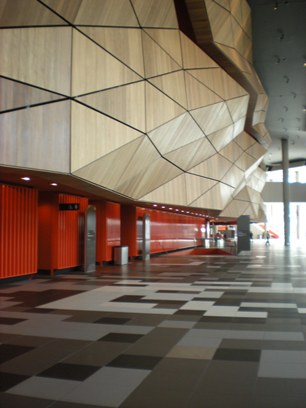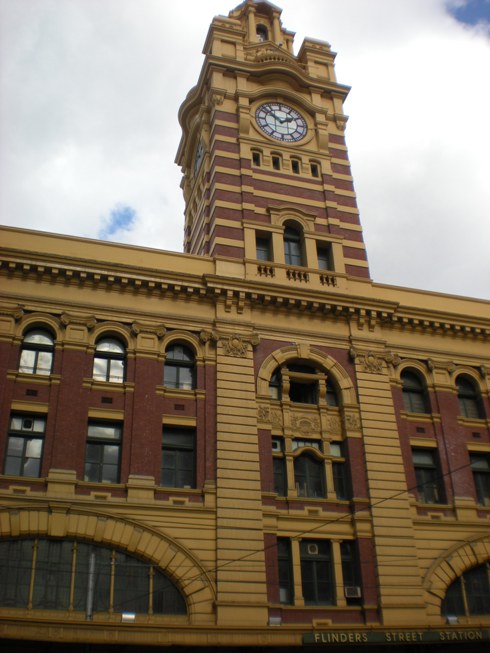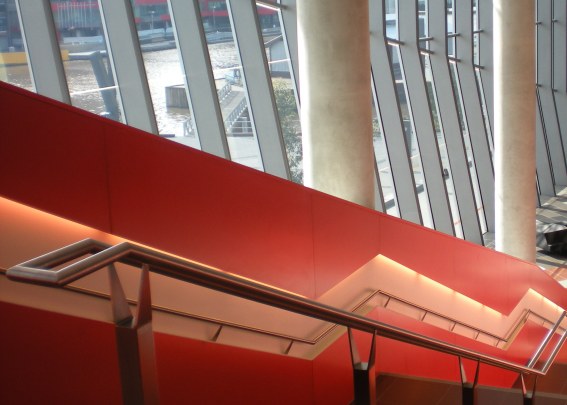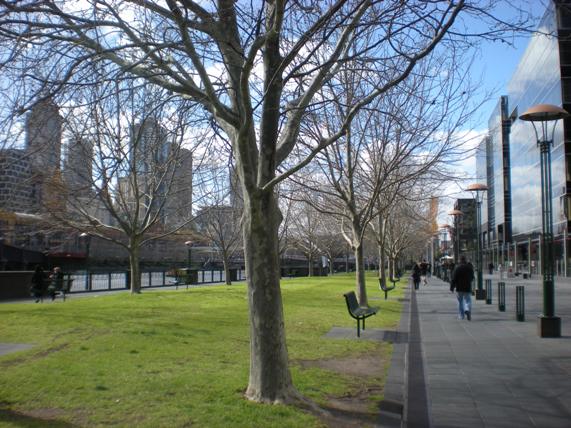 Another good day in Melbourne. Heard Richard Foote talk about Indexing New Features in Oracle 11g release 1 and 2. One thing he demonstrated was the creation of an index on only part of a table – normally I’d use a function-based index for this sort of thing, but his technique results in an index that is useful without adding strange predicates to all relevant queries in the application; it involves creating a globally partitioned index, in an UNUSABLE state, then rebuilding only selected partitions. This could be very useful for customers who have the partitioning option.
Another good day in Melbourne. Heard Richard Foote talk about Indexing New Features in Oracle 11g release 1 and 2. One thing he demonstrated was the creation of an index on only part of a table – normally I’d use a function-based index for this sort of thing, but his technique results in an index that is useful without adding strange predicates to all relevant queries in the application; it involves creating a globally partitioned index, in an UNUSABLE state, then rebuilding only selected partitions. This could be very useful for customers who have the partitioning option.
Of interest to me was Discovering the Power to Save the Planet, presented by Robin Eckermann (Smart Grid Australia) – having worked for a short time at Western Power, it was interesting to hear his perspective on the future of the generation and distribution of power. He compared the state of the art in power to broadband, as it was 15 years ago – and asserts that the smart grid will enable all sorts of new applications for customers to regulate their demand intelligently, and is essential for the coming wave of electric cars.
After that was Steven Feuerstein’s second talk, “Golden Rules for Developers“, which was well worth a good listen. I recommend you download and read the powerpoint if you missed it. If you take even just one of his recommendations (e.g. Don’t Repeat Anything, Don’t Take Shortcuts, Build On A Foundation, Don’t Code Alone), I think you will improve the quality of your code, reduce the cost of maintenance for your employer/client, and be much more satisfied with your work. I certainly intend to – I’ve been guilty of “starting from scratch” many times – I do carry around a portable hard drive with a large collection of bits and pieces I’ve collected along the way, but nothing I can just plug in and use with confidence. Steven also gave another PL/SQL talk at the end of the day, this time for DBAs, and that was interesting to me (as a developer). If you’re a DBA, but think that you have no need for PL/SQL, think again.
After that, during lunch, Steven announced the winners of the previous day’s quiz – and wouldn’t you know it, I won 🙂


After a scrumptious breakfast at the Armoury I headed in what I believed was the general direction of the Melbourne Convention Centre – after making a wrong turn I eventually spotted a footbridge over the river that rung a bell from my GoogleEarthing; after taking some photos I was finally at InSync10.
The first session was Connor McDonald’s 11g Features for Developers, which was an eclectic mix of bits and pieces you won’t get from reading the New Features Guide or from Oracle Marketing, along with some gratuitous use of photos of his kids.
Steven Feuerstein didn’t present next, instead he made us think by running a Developer Quiz. Much like the PL/SQL Challenge (at which, by the way, you should sign up this instant if you haven’t already), it was fun and challenging, and I suspect everyone learned at least one new thing. Me, I learned what SUBSTR returns if the 2nd parameter (which normally starts at 1) is zero. As always, Steven was completely open to criticism, and with Connor and Tom in the room he certainly didn’t get off scot free 🙂

As it happened, I happened to disagree on one question, which was regarding the USING clause and how many bind variables must be supplied to a given statement. One of the responses (from memory) was that “you must always supply as many bind variables as there are placeholders”. I knew that if the statement being executed was SQL, the number of bind variables must match the number of placeholders, even if some of them have the same names (e.g. INSERT INTO emp VALUES (:a, :b, :a, :b) would require four bind variables). However, I also knew that if the statement is a PL/SQL block, each unique placeholder requires a different bind variable – if the placeholder appears more than once in the block, you don’t repeat the bind variable in the USING clause. I therefore ticked this answer as “correct” – if, for example, the block was BEGIN call_something(:a, :b, :a, :b); END;, you would have to provide two bind variables, because that is how many distinct placeholders there are in the block.
There was some discussion about this, because the answer was marked incorrect – according to Steven the number of placeholders in the block above is four, not two – and I agree that the meaning of a “placeholder” is different to a “bind variable”, although I usually speak as if to conflate the two ideas. However, I still hold to the opinion that a “placeholder” in the context of a PL/SQL block is a reference to this: :a, and I would say that the one placeholder :a appears twice in the PL/SQL block. I believe I have the documentation to back me up:
If the dynamic statement represents a PL/SQL block, the rules for duplicate placeholders are different. Each unique placeholder maps to a single item in the USING clause. If the same placeholder appears two or more times, all references to that name correspond to one bind argument in the USING clause. In Example 7-7, all references to the placeholder x are associated with the first bind argument a, and the second unique placeholder y is associated with the second bind argument b.
(emphasis added) Source: Using Duplicate Placeholders with Dynamic SQL
This is really just an argument over semantics, so no big deal. Some of the other questions had much more interesting discussion, so it was well worth attending. If you’re in Perth on Friday, Steven is running it again (I won’t be able to attend, unfortunately). I presume he will be using different questions…

After that I went for a walk through Melbourne, since it was sunny outside. The climate in Melbourne, I discovered, is a tad different to Perth. Wandering along the riverside, I ended up experiencing a blast of all four seasons within the space of an hour – a lovely spring breeze, a somewhat warmish summer, then a cold blustering windy autumn (a bit out of order that) – there was a few seconds where it was difficult to remain upright – followed by a sudden rainstorm. I managed to find shelter under one of the many bridges that cross the river, waited for about ten minutes, then was able to walk back to the centre without getting any wetter. In fact, by the time I got back to the convention centre it was sunny again.

After a light lunch it was my turn to talk, and I think my presentation on APEX Themes and Templates went quite well. I appreciated the comments and questions that came back, and had some further discussion with a few people afterward as well, which was good.
I forwent Connor’s excellent Partitioning presentation which I’ve heard before, instead heard Kyle Hayle – Database Performance Made Easy – demonstrate the virtues of database tuning using a tool such as the one he’s produced at Embarcadero. I haven’t made use of many graphical tuning tools before, preferring just “the numbers”, but Kyle made an excellent case for the use of pictures instead of words for not only visualising the workload on the database (such as presented by Oracle’s Enterprise Manager, which Kyle had a hand in), but also for visualising the structure of a query. Personally, I’ve grown accustomed to using the traditional explain plan and I suspect I’ll probably continue to, but the Embarcadero product does have some features that automate some of the work I’d normally do by hand (such as examining the constraints on the tables and obtaining filter percentages).
Last of all, Tom Kyte presented The Best Way, in which he laid to rest for once and for all the answer to the age-old (and oft-repeated) question, “what is The Best Way to …?”. Finally, we can stop arguing over which way is worthy of being called Best Practice, and get on with the job 😉

 Went out for a nice dinner at a small japanese restaurant, which had a great cozy atmosphere, and on the way back to the hotel was surprised by these great explosions of flame from these pillars. I could feel the heat from hundreds of meters away. At the end, a quick stop at a store allowed me to procure what I’d been coveting all day: Farmer’s Union Iced Coffee.
Went out for a nice dinner at a small japanese restaurant, which had a great cozy atmosphere, and on the way back to the hotel was surprised by these great explosions of flame from these pillars. I could feel the heat from hundreds of meters away. At the end, a quick stop at a store allowed me to procure what I’d been coveting all day: Farmer’s Union Iced Coffee.
 Another good day in Melbourne. Heard Richard Foote talk about Indexing New Features in Oracle 11g release 1 and 2. One thing he demonstrated was the creation of an index on only part of a table – normally I’d use a function-based index for this sort of thing, but his technique results in an index that is useful without adding strange predicates to all relevant queries in the application; it involves creating a globally partitioned index, in an UNUSABLE state, then rebuilding only selected partitions. This could be very useful for customers who have the partitioning option.
Another good day in Melbourne. Heard Richard Foote talk about Indexing New Features in Oracle 11g release 1 and 2. One thing he demonstrated was the creation of an index on only part of a table – normally I’d use a function-based index for this sort of thing, but his technique results in an index that is useful without adding strange predicates to all relevant queries in the application; it involves creating a globally partitioned index, in an UNUSABLE state, then rebuilding only selected partitions. This could be very useful for customers who have the partitioning option.








